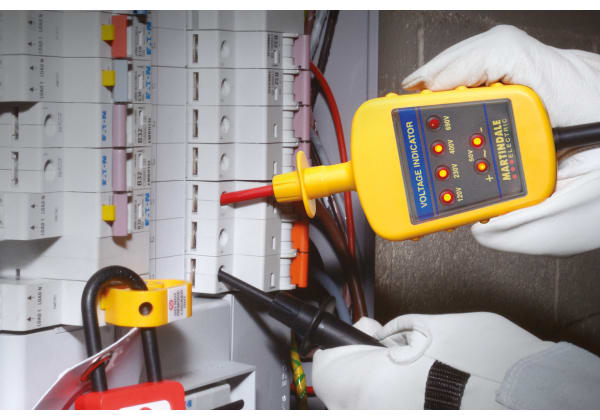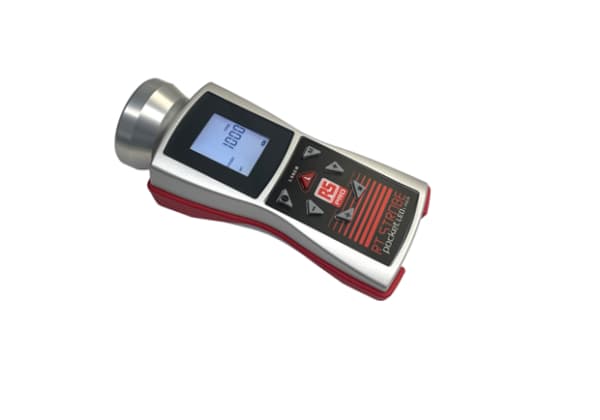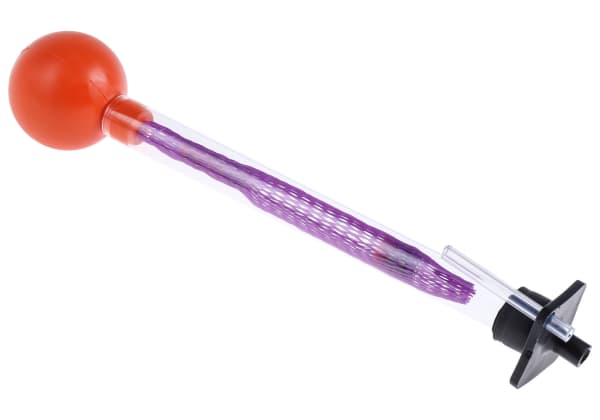- Published 12 Dec 2024
- Last Modified 12 Dec 2024
- 6 min
Guide to Conductivity Meters
A conductivity meter measures a material's ability to conduct an electric current, often used to test water quality. Learn more about how they work and how they’re used in this guide.
A conductivity meter is an indispensable tool for measuring the ability of a solution to conduct electric current. It finds extensive application in various industries, including research and development, water treatment, and manufacturing. Designed to provide accurate and reliable conductivity measurements, conductivity meters enable users to monitor the purity or concentration of a liquid sample efficiently.
Typically, these meters comprise a probe or electrode immersed in the solution and an electronic device that measures electrical conductivity. In this guide, we will delve into the workings of conductivity meters, their applications, the calibration process, and best practices for using them effectively.
What is a Conductivity Meter?
A conductivity meter, also known as a conductometer, is a scientific instrument used to measure a substance's ability to conduct electric current. Conductivity refers to the ability of materials, such as solutions, metals, or gases, to conduct an electric current. Although all materials can carry electric currents to some extent, the level of conductivity varies among them. Materials that produce conductive solutions when dissolved in water are called electrolytes. These substances can dissociate into ions in water, resulting in free ions in the solution. Examples of electrolytes include acids, bases, and salts. On the other hand, substances that do not conduct electricity when dissolved in water are known as nonelectrolytes.
Conductivity meters operate on the principle that electrical conductivity is directly proportional to the concentration of ions in a solution. The device measures conductivity by passing an electric current through the liquid and measuring the resulting resistance. Higher ion concentration results in higher conductivity.
What Does a Conductivity Meter Measure?
These instruments are essential in laboratories, water treatment plants, pharmaceutical industries, and food processing facilities. Conductivity meters are used to determine the conductivity of different substances, such as water, chemicals, or bodily fluids. They play a crucial role in assessing water conductivity, monitoring chemical processes' efficiency, and ensuring industrial equipment's proper functioning.
How Do Conductivity Meters Work?
Conductivity meters typically include a probe or electrode immersed in the liquid being tested. The probe contains two electrodes that conduct the electric current and measure the resistance. The readings are displayed on a digital screen, allowing users to determine the solution's conductivity quickly and accurately.
What is a Conductivity Meter Used For?
A conductivity meter measures a solution's electrical conductivity and is essential in various industries and applications, including hydroponics, agriculture, aquaculture, and freshwater and wastewater management.
Hydroponics
In hydroponics, conductivity meters are vital for monitoring nutrient levels in the solution used to grow plants without soil. By measuring the conductivity, growers can ensure the solution contains the optimal amount of nutrients for plant growth, maintaining the right balance and preventing nutrient deficiencies or excesses.
Agriculture
In agriculture, conductivity meters assess soil salinity, which refers to the amount of salt present in the soil. Excessive salinity can negatively impact crop growth and yield. By measuring the soil's conductivity, farmers can determine if it is suitable for cultivation or if corrective measures are necessary.
Aquaculture
Aquaculture, the farming of aquatic organisms, relies on conductivity meters to monitor water quality. High conductivity levels can indicate the presence of dissolved solids or contaminants, which can harm fish and other aquatic organisms. Regularly measuring conductivity ensures optimal conditions for the health and growth of aquatic livestock.
Freshwater and Wastewater Management
Conductivity meters are also used in freshwater and wastewater management. They help assess water sources' conductivity, such as rivers or lakes, to determine their quality and suitability for various purposes. In wastewater treatment plants, conductivity meters monitor treatment processes' effectiveness and ensure compliance with environmental standards.
Calibrating a Conductivity Meter
Calibrating a conductivity meter is crucial for ensuring accurate conductivity measurements in solutions. Conductivity meters are widely used in various industries, including laboratories, manufacturing plants, and water treatment facilities. Here are some steps to consider:
- Gather the necessary calibration solutions prior to calibrating. Calibration solutions typically come in different conductivity levels, such as low, medium, and high. Using at least two different solutions is recommended for effective calibration.
- Ensure the conductivity meter is clean and free from contaminants. Rinse the electrode with distilled water and gently pat it dry with a clean cloth. Then, immerse the electrode in the first calibration solution.
- Once the electrode is immersed, allow the meter to stabilise and read the conductivity value. Compare the reading to the known value of the calibration solution. If there is a significant difference, adjust the meter accordingly using the calibration controls.
- Repeat the process with the second calibration solution to verify the meter's accuracy. If the readings deviate from the expected values, make the necessary adjustments until the meter displays the correct values.
Regular recalibration of the conductivity meter is essential to maintain accuracy. Factors such as temperature, electrode aging, and contamination can affect the meter's performance over time. Regular calibration ensures reliable measurements and consistent results.
How to Use a Conductivity Meter
If you’re wondering how to use a conductivity meter, this step-by-step process will show you how to use conductivity meter effectively.
- Familiarise yourself with the meter: Start by reading the user manual provided with your conductivity meter. This will give you a better understanding of its features, buttons, and settings.
- Prepare the sample: Ensure the sample is clean and free from contaminants before measuring conductivity. This may involve filtering or diluting the sample as necessary.
- Calibrate the meter: Calibration is crucial for accurate measurements. Follow the manufacturer's instructions to calibrate the meter using calibration standards of known conductivity.
- Measure the conductivity: Dip the conductivity probe or electrode into the sample solution. Allow the meter to stabilise and record the conductivity reading displayed on the screen.
- Rinse and clean: After each measurement, rinse the probe with distilled water to remove any residues. Dry it gently with a clean cloth or tissue.
- Store the meter properly: To ensure the longevity of your conductivity meter, store it in a clean and dry environment. Always keep the probe protected and avoid exposing it to extreme temperatures or direct sunlight.
Remember, the accuracy of your conductivity measurements depends on proper technique and maintenance. Regularly check the condition of the probe and replace it if necessary. By following these steps, you can confidently use a conductivity meter to measure the electrical conductivity of various solutions and substances.
RS provides a comprehensive range of test and measurement equipment, including environmental test and measurement tools.
Related Articles
Related links
- Conductivity Meters
- Guide to Units of Conductivity
- Hanna Instruments HI98312 Water Conductivity Meter
- Hanna Instruments HI-98311 Water Conductivity Meter
- Jumo 202924/10-0001-1003-105-37-88-26/000 Water Conductivity Meter
- What are Ohmmeters Used for?
- RS PRO Conductivity Meter
- What is a Clamp Meter & How Do You Use One?



